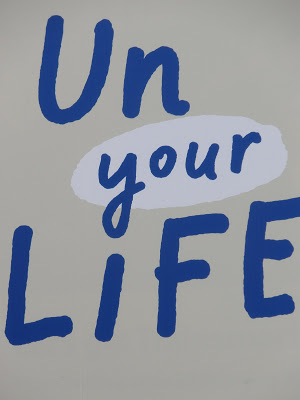It isn’t easy to have human thinking explained. For most of us, thinking is at least somewhat unpleasant. We try to avoid it, where possible.
The reality is that we all have blind spots in our thinking due to the fundamental way that our brains work. One way of modeling how the brain operates is as though there are two systems at work.
Drew and Hazelyn
Psychologists call them system one and system two, but maybe it’s useful to think of them as characters. So let’s call system one Hazelyn and system two Drew.
Drew represents your conscious thought, the voice in your head. This is the voice that says, “I am who you think you are.” He’s the one capable of following instructions. Drew can execute a series of steps too. But Drew is lazy. It takes effort to get Drew to do anything, and he is slow. But he’s also the careful one, capable of catching and fixing mistakes.
Now meet system one, Hazelyn. She is incredibly quick, which she needs to be since she’s constantly processing lots of information coming through your senses. Hazelyn picks out the relevant bits and discards the rest, which is most of it. She also works automatically without Drew being consciously aware of it.
The way I like to think of these characters is related to one of your main memory structures. Hazelyn’s automatic responses are made possible by long-term memory. This is the library of experiences you’ve built up over your lifetime.
In contrast, Drew exists entirely within working memory so he’s only capable of holding four or five novel things in mind at a time. This is perhaps one of the best-known findings from psychology. Our capacity to hold and manipulate novel information is incredibly limited like when trying to remember a string of random numbers.
But we are able to overcome these limitations if the information is familiar to us.
How to test Drew
Let me give you four random digits “8102″. Now these would normally take up most of your working memory capacity just to remember. But if you reverse them, 2018, they are now just the present year.
The process of grouping things together according to your prior knowledge is called chunking, and it’s a great study tip for improving your grades. You can actually hold four or five chunks in working memory at once. So the larger the chunks the more information you can actively manipulate at one time.
Learning is then the process of building bigger chunks by storing and further connecting information in long-term memory. This is essentially passing off tasks from Drew to Hazelyn. In order for this to happen, Drew first has to engage with the information actively, often multiple times.
For example, when you were first learning to tie your shoelaces, you probably recited a rhyme to help you remember what to do next. You used up all your working memory in the process. But after doing it over and over and over again, it gradually became automatic. Drew doesn’t have to think about it anymore because Hazelyn gets it.
Musicians and sports stars refer to this as muscle memory. Of course, the memory is not the muscles. It’s still in the brain, just controlled by Hazelyn. Slow and deliberate conscious practice repeated often enough leads to automatic processes.
99% of the time what appears to be superhuman ability comes down to the incredible automation skills of Hazelyn and developed through the painstaking deliberate practice of Drew. What’s interesting is that it’s actually possible to see how hard Drew is working just by looking at someone.
Here’s an exercise
I’m going to show you four digits, I want you to read them out loud and then after two seconds, I want you to say each number, but adding one to each digit.
So, as an example, 7 2 9 1 should be… 8 3 0 2. This is called the Add One task and it forces Drew to hold these digits and memory while making manipulations to them.
Now it’s important to say the numbers at the end of two seconds, but this time try to add three. Ready? Here’s another one:
4739
What you’re unaware of is that as you’re completing this task, your pupils are dilating. When Drew is hard at work as he is in this task, you have a physical response. This includes increased heart rate, sweat production, and pupil dilation.
When this research was originally carried out, the researchers made a surprising observation. When the participants were not engaged with the tasks and were just chatting with the experimenters, their pupils didn’t really dilate at all. This indicates that the Add One and Add Three tasks are particularly strenuous for system two. Most of our day-to-day life is a stroll for Drew with most tasks are handled automatically by Hazelyn. We spend a lot of our lives lounging around. Our brains also spend most of their time doing the mental equivalent.
And I don’t mean to make that sound like a bad thing! This is how our brains evolved to make the best use of resources. For repetitive tasks, we developed automatic ways of doing things, reserving Drew’s limited capacity for things that really need our attention. In some circumstances, there can be mix-ups of course.
For example, if you spend any amount of time in Australia, one of the first things you will need to relearn is to turn the lights on by flicking the switch down. If you grew up in North America, Drew, “knows” that “down” was “off” in Australia. Oops!
Drew endorses the idea of flipping the switch down to turn off without being consciously aware that the answer came from Hazelyn. He goes forward without checking it. After all, the direction sounds reasonable and Drew is lazy.
So how do you get Drew to do more work?
Researchers have found at least one way. When they gave out a clearly printed test including the “Bat and Ball”question to incoming college students, 85% got at least one wrong. When they printed the test in a hard-to-read font with poor contrast, the error rate dropped to thirty-five percent. The harder to read test resulted in more correct answers. The explanation for this is simple. Since Hazelyn can’t quickly jump to an answer, he hands off the task to Drew who then invests the required mental effort to reason his way to the correct answer.
When something is confusing, Drew works harder. When Drew works harder, you’re more likely to reach the right answer and remember the experience. StudyGate tutors love to push Drew so that you can up your study skills.
This is something the advertising industry can use to its advantage.
Here’s a billboard with no clear meaning:
There is no logo and no indication of what it is for. This seems to go against all the basic principles of advertising. The viewer should see what the product does, how it’s better than the competition, and observe clear branding. The goal is usually to make the message as easy to understand as possible so Drew doesn’t have to work very hard.
But if you look at a lot of effective advertising today, it’s changed to be more confusing. There really is an “Un” advertisement campaign in Sydney, Australia, and they are everywhere. With “Un” there is no stress, just unstress. No hassle, just unhastle. With “Un” you can undo what you did, you can undrive through the car wash with the window down or unbreak dance in front of your teenage son. And his friends. “Un” makes life relaxing and unreal. “Un” your life. Be happy and live for now. Don’t worry. Unworry.
Can you guess what the ads were for?
They’re actually for insurance.
Now that advertising is everywhere, Hazelyn is skilled at filtering it out. If I see another insurance ad, I never would give it a second thought. But if something doesn’t make sense, my mind refers it to Drew.
This same realization has been happening in education. Lectures which have long been the dominant teaching method are now on the decline.
Like the old form of advertising, they’re too easy to tune out and often, especially in science lectures, too many new pieces of information are presented. That exceeds Drew’s capacity because he doesn’t have big enough chunks to break the material into.
In place of lectures, universities are introducing workshops, peer instruction, and formats where students are forced to answer more questions, and do more work than just listen and take notes.
This will undoubtedly make Drew work harder, which is good because that’s how learning happens, but a lot of students don’t like it because it requires more effort. Just as it’s hard to motivate someone to get off the couch and exercise, it’s hard to get Drew to give his full effort. There’s an appeal to doing things you already know.
That’s why we need Hazelyn to push Drew and do something new.
Original content by Veritasium

